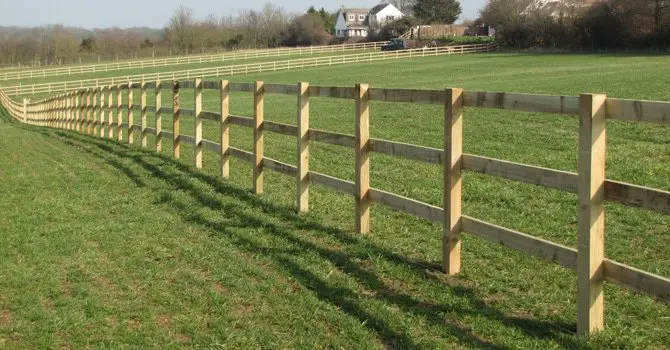Electric Weed Eaters – Protecting Your Fence Posts

A properly installed fence is a worth investment that needs optimum protection from your electric weed eater. If caution is not taken, weed eaters, like any brush cutters, grass trimmer or weed wackers can chew up your fence posts’ protective coating splinter by splinter causing loose fibres, water soaking and rotting thus overall loss. Because of this, most weed eater manufactures warn purchasers about possible damages that can be caused. It’s therefore vital to find innovative products and recommended trimmer protection for your fence (and fence posts) regardless of type. For your fence to last for a lifetime, it should be covered with a protective material. If by any chance your fence posts have already been damaged, further damage can be prevented by covering or sealing the exposed part or splinted post base with paint, stain or any recommended post protector.

Measures to protect your fence from an Electric Weed Eater
Be it a contractor with an aim of adding value to his services, a home owner who values his property and wants a longer lasting fence to cut on yearly expenses or a landscaper seeking to eliminate liabilities, the following measures are important in protecting your vinyl fences, wood fences, metal fences or any other type of fence and fence posts from Electric Weed Eaters and trimmers.
First Measure: Exercising Control
A lot of measures can be put in place to protect the fence and fence posts from Weed Eaters. Of all these measures, Exercising Control and Caution is the easiest and the most profound one. It is important to always take time when using a weed eater. When approaching the posts, employ a slower approach not forgetting to angle the trimmer down so as to cut the weeds at ground level while at the same time reducing the probability of hitting the fence and fence posts. By avoiding structures, the life of the trimmer string is enhanced. If you find it difficult to observe the above, an old fashioned method of trimming around the fence and fence posts by hand is encouraged.
Second Measure: Décor Utilisation
This form of fence protection is best suited to those into aesthetics or anyone who finds decorative solutions appealing. To utilise décor, one needs to purchase ceramic tiles equal in width to fence posts. They are then installed one per side of each post. If smaller tiles are utilised, construction adhesive should be used to hold the tiles in position. To customise to individual taste, a splash of colour e.g. cobalt blue can be applied to the area.
Third Measure: Metal Flashing
Metal Flashing is a thin piece of metal mostly used when repairing or installing a roof. This type of metal can be used as a fence protector when bits of it are screwed on the affected parts of the post.
A Metal Flush is usually installed at the bottom of the fence post to offer protection from Electric Weed Eaters. Usually, most weeds or unwanted plants grow along the fence line. One safe way of removing them is by pulling them off by hand but this is a cumbersome and a not-easy process. Therefore, an Electric Weed Eater is advised but the downside is; it may get too close therefore striking the fence and fence posts. If the posts are wooden and repeatedly subjected to the Weed Eater, their integrity is abused over time. Therefore, fence post protectors that keep post bottoms pristine are advised. Most of these are available in online home improvement stores.
The metal flash idea can also be used when trimming by setting or installing a flat metal shovel or cardboard pieces between the weeds and posts while weed eating.
Fourth Measure: Fence Post Piping
A corrugated pipe, wide enough to fit to the bottom of the fence posts is slit on one side and cut to around 3 inches to make it less noticeable. This form of fence protection secures the fence posts from Electric Weed Eater Whacks.
Fifth Measure: Other Weed Killing Options
Actually, every time your weed eater hits the fence or posts does not necessarily mean that Vinyl Coating chunks are knocked off, but when it happens over time, the metal is exposed to the elements making the fence weak through rust. Alternative safe and old hand pulling technique along the entire fence line is too cumbersome. Therefore, spraying weeds with Herbicides e.g. Glyphosate eliminates weeds with very minimal effort. After elimination, mulch is spread all around the fence line so as to prevent further sprouting of the weeds. A weed control fabric landscape can also be installed under mulch for additional protection.
Conclusion
Fences are expensive structures that take a long period of time to complete and should therefore be well maintained to last for a long time before being replaced. Painting and observing the above protection measures will ensure your fence looks good for the long-term and even though the protective covering wears out, it is cheaper to replace it than re-installing the entire fence.
The other articles may you concern, as this is by:


Very nice article and very helpful.
For the metal flashing idea, there is a product I found online called Fence Armor, (https://www.fencearmor.com) which is made from galvanized steel and is much stronger than the metal flashing that you would use on roofs.
It has curved edges to also reduce the damage on the weed wacker lines as well. Hope that helps.